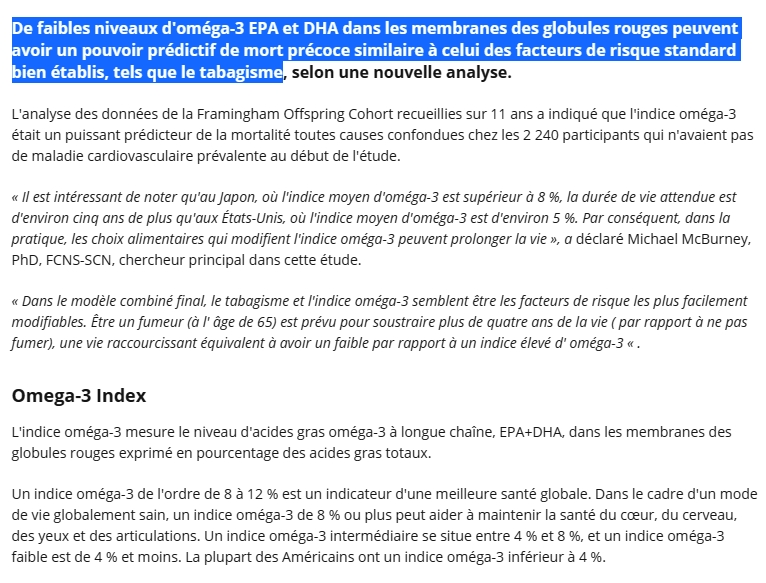Using an erythrocyte fatty acid fingerprint to predict risk of all-cause mortality: the Framingham Offspring Cohort
Michael I McBurney, The American Journal of Clinical Nutrition, 16 June 2021
Background
RBC long-chain omega-3 (n–3) fatty acid (FA) percentages (of total fatty acids) are associated with lower risk for total mortality, but it is unknown if a suite of FAs could improve risk prediction.
Objectives
The objective of this study was to compare a combination of RBC FA levels with standard risk factors for cardiovascular disease (CVD) in predicting risk of all-cause mortality.
Methods
Framingham Offspring Cohort participants without prevalent CVD having RBC FA measurements and relevant baseline clinical covariates (n = 2240) were evaluated during 11 y of follow-up. A forward, stepwise approach was used to systematically evaluate the association of 8 standard risk factors (age, sex, total cholesterol, HDL cholesterol, hypertension treatment, systolic blood pressure, smoking status, and prevalent diabetes) and 28 FA metrics with all-cause mortality. A 10-fold cross-validation process was used to build and validate models adjusted for age and sex.
Results
Four of 28 FA metrics [14:0, 16:1n–7, 22:0, and omega-3 index (O3I; 20:5n–3 + 22:6n–3)] appeared in ≥5 of the discovery models as significant predictors of all-cause mortality. In age- and sex-adjusted models, a model with 4 FA metrics was at least as good at predicting all-cause mortality as a model including the remaining 6 standard risk factors (C-statistic: 0.778; 95% CI: 0.759, 0.797; compared with C-statistic: 0.777; 95% CI: 0.753, 0.802). A model with 4 FA metrics plus smoking and diabetes (FA + Sm + D) had a higher C-statistic (0.790; 95% CI: 0.770, 0.811) compared with the FA (P < 0.01) or Sm + D models alone (C-statistic: 0.766; 95% CI: 0.739, 0.794; P < 0.001). A variety of other highly correlated FAs could be substituted for 14:0, 16:1n–7, 22:0, or O3I with similar predicted outcomes.
Conclusions
In this community-based population in their mid-60s, RBC FA patterns were as predictive of risk for death during the next 11 y as standard risk factors. Replication is needed in other cohorts to validate this FA fingerprint as a predictor of all-cause mortality.














